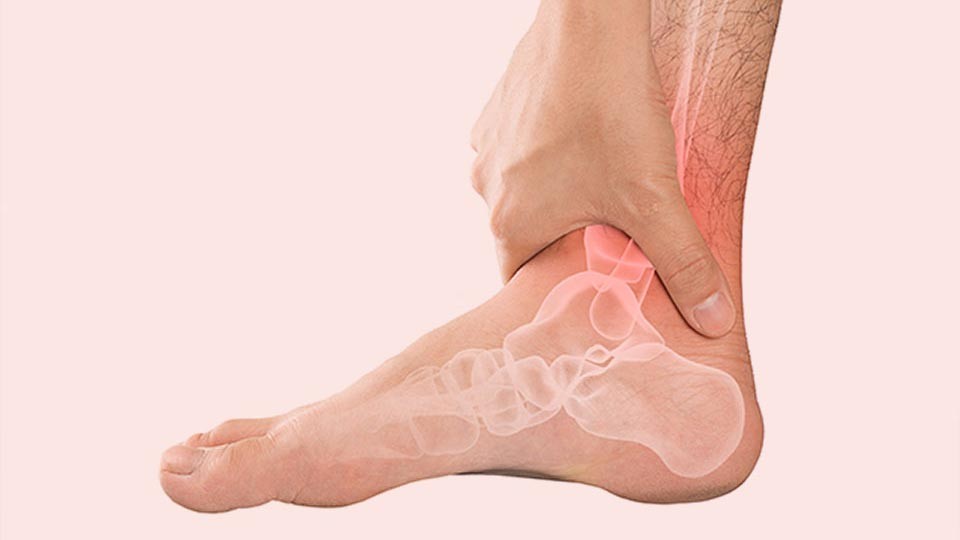RUN BETTER WITH OUR NEWSLETTER
Weekly updates on gear, offers & events
JOIN NOW
A stress fracture, also known as a hairline fracture, is an overuse injury, typically related to high-impact activities. Repetitive stress on the bone causes damage – small cracks or bruises.
A stress fracture occurs on weight-bearing bones, so it will be located in the lower body. It’s a small crack in the bone structure which gets worse and more painful if isn’t treated with enough care and attention. The most common bones affected by stress fracture are tibia, fibula and metatarsals. These are also easier and faster to heal. The femur and pelvis also can be affected by a stress fracture, however not that often and they need a bit more time and attention.
Stress Fracture Causes / Stress Fracture Symptoms / Stress Fracture Recovery / Stress Fracture Prevention / Stress Fracture FAQs
Which activities cause stress fractures? Generally high impact activities like running or jumping. Also, intensive walking could put that much pressure on the body. Of course, such damage doesn't happen overnight, and usually there are more factors involved in the process:
How to know if you're running with a stress fracture? In the early stages you can feel aching at some point along the bone. Sometimes severe shin splits might feel like a stress fracture, but unlike shin splits or tendon injuries, the pain worsens as you run. Eventually the pain appears even with less impact (walking) or no impact at all (laying down, sitting). Sometimes when you touch your bone you can feel a small bump or swollen area.
If you have the symptoms above, we recommend you stop running, implement RICE (Rest, Ice, Compress, Elevate) and book an appointment with your doctor or podiatrist to establish whether damage has been done to your bone. Unfortunately, X-ray isn’t very accurate, so a bone scan or MRI might be more a reliable option, although it’s more expensive.
Recovery time from a stress fracture depends mainly on the damaged area. We can separate stress fractures to low risk and high risk.
Low risk fractures are located on the lower leg and foot, usually the tibia, fibula or metatarsal bones. These are the most common stress fractures. They’re called ‘low risk’ because the healing time is fairly quick (usually 8 weeks) and in many cases they can be healed without the infamous boot.
High risk fractures, however, need more time to heal (around 12 weeks) and affect the pelvis and femur.
Of course, each situation is different, and your case might take less/more time than that. Sometimes you might need a few months, or maybe even a year. Basically, when you are able to walk without pain it’s a sign that you can start slowly(!) getting back to your regular activities. You must be very conscious though! Listen to your body and carefully and consult your doctor on any concerns about your recovery.
The best answer is SLOWLY. Your doctor should give you advice regarding activities you could do to get back to running. Unfortunately, at the beginning, avoiding high-impact activities like jumping and running is must.
But don’t worry, there’s a lot you can do to get back stronger than ever! Implementing cross-training like aqua jogging or elliptical training might be a good idea, but this should be discussed with your doctor. Each case is different, and you certainly don’t want to make things worse. Check out our videos for strengthening your core and legs muscles without impact:
You certainly can’t and you probably won’t even try to run because the pain caused by a stress fracture is really noticeable. Truly, the only way to heal is offering yourself the gift of time and patience.
It depends how severe the fracture is. If you feel pain during walking your doctor might put you in a boot or crutches. On some occasions you might stay in a bed to reduce the impact and speed up the healing.
For the stress fracture to heal you need a minimum of 6-12 weeks – it depends on the place. If you feel acute pain during this time it's absolutely normal. Sometimes the healing process takes longer than usual – even months, or rarely years. But if you still feel pain even though your bone fracture is completely healed (chronic pain) it might be a sign of nerve damage or scar-tissue development. Consulting your doctor is the best way to establish the reason and address the problem.
It gets more and more painful. In the worst scenario it can lead to a non-union bone fracture, which is much harder to heal. The sooner you react, the better!
Reducing the impact on the bone – sometimes even walking might be too much. Listen to your doctor’s advice and get a closer look at your diet. Taking Vitamin D supplements, avoiding alcohol and smoking definitely helps too.
This general information is not intended to diagnose any medical condition or to replace your healthcare professional. If you experience any pain or difficulty with these exercises/advice, stop and consult your healthcare provider. Always seek the advice of a qualified healthcare professional with any questions you may have regarding this subject.
AveryApril 26, 2025 at 11:45pm
I have a had 2 stress fractures and I’m trying to get back to running and being healthy, but one of the biggest things you should do is make sure you are eating enough!!! Reply